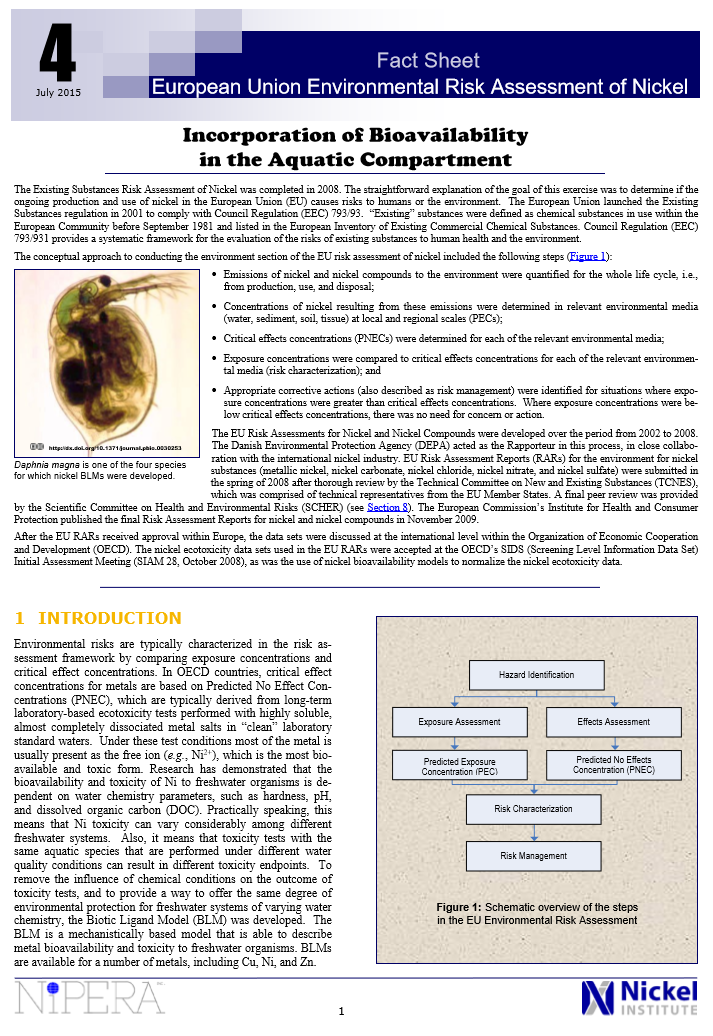
Environmental risks are typically characterized in the risk assessment framework by comparing exposure concentrations and critical effect concentrations. In OECD countries, critical effect concentrations for metals are based on Predicted No Effect Concentrations (PNEC), which are typically derived from long-term laboratory-based ecotoxicity tests performed with highly soluble, almost completely dissociated metal salts in “clean” laboratory standard waters. Under these test conditions most of the metal is usually present as the free ion (e.g., Ni2+), which is the most bioavailable and toxic form. Research has demonstrated that the bioavailability and toxicity of Ni to freshwater organisms is dependent on water chemistry parameters, such as hardness, pH, and dissolved organic carbon (DOC). Practically speaking, this means that Ni toxicity can vary considerably among different freshwater systems. Also, it means that toxicity tests with the same aquatic species that are performed under different water quality conditions can result in different toxicity endpoints. To remove the influence of chemical conditions on the outcome of toxicity tests, and to provide a way to offer the same degree of environmental protection for freshwater systems of varying water chemistry, the Biotic Ligand Model (BLM) was developed. The BLM is a mechanistically based model that is able to describe metal bioavailability and toxicity to freshwater organisms. BLMs are available for a number of metals, including Cu, Ni, and Zn.
Like all BLMs, the Ni BLM integrates two fundamental chemical processes that occur with Ni in all natural waters. The first is complexation, where DOC complexes dissolved free ionic Ni2+, thereby reducing the quantity of Ni2+ that is available to bind to the biotic ligand. The second process is competition, which describes the interaction between similarly charged ions that occur naturally in freshwater, such as calcium (Ca2+), magnesium (Mg2+), and protons (H+, expressed as pH). These cations will compete with Ni for binding sites on the biotic ligand. Included in the BLM are aqueous speciation reactions that quantify the degree of DOC complexation and cation competition. Correcting for bioavailability using the BLMs is crucial to translate the toxicity of Ni to the prevailing site-specific water chemistry to generate site-specific PNECs for the freshwater environment.
This fact sheet provides a summary of the development of Ni bioavailability models for the freshwater aquatic compartment, as well as clear guidance on how to perform and implement bioavailability correction for these systems.